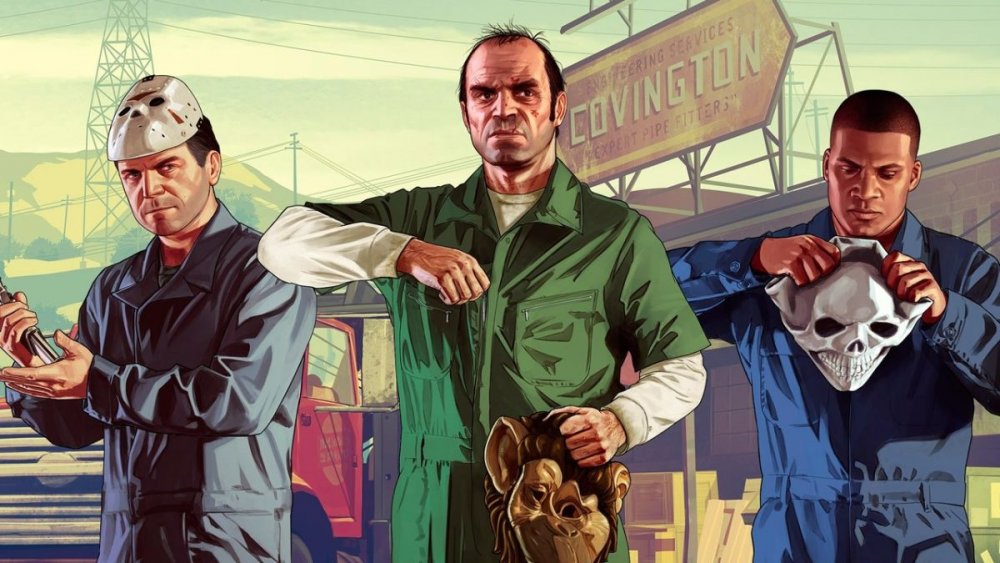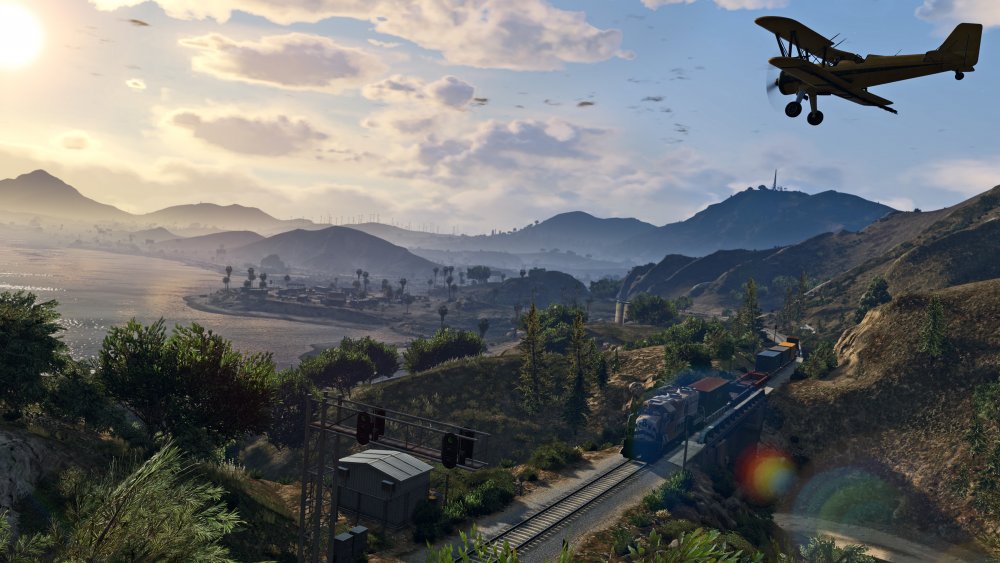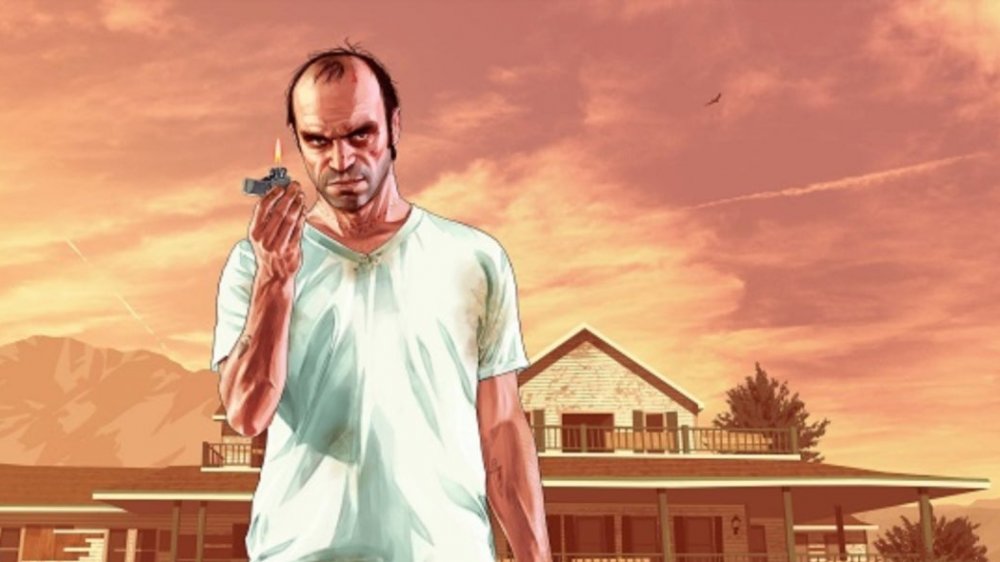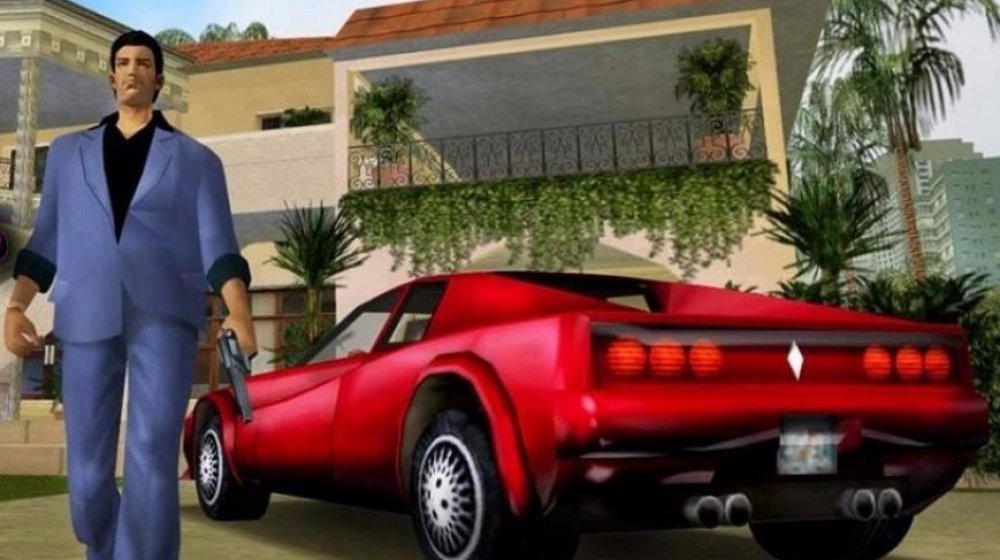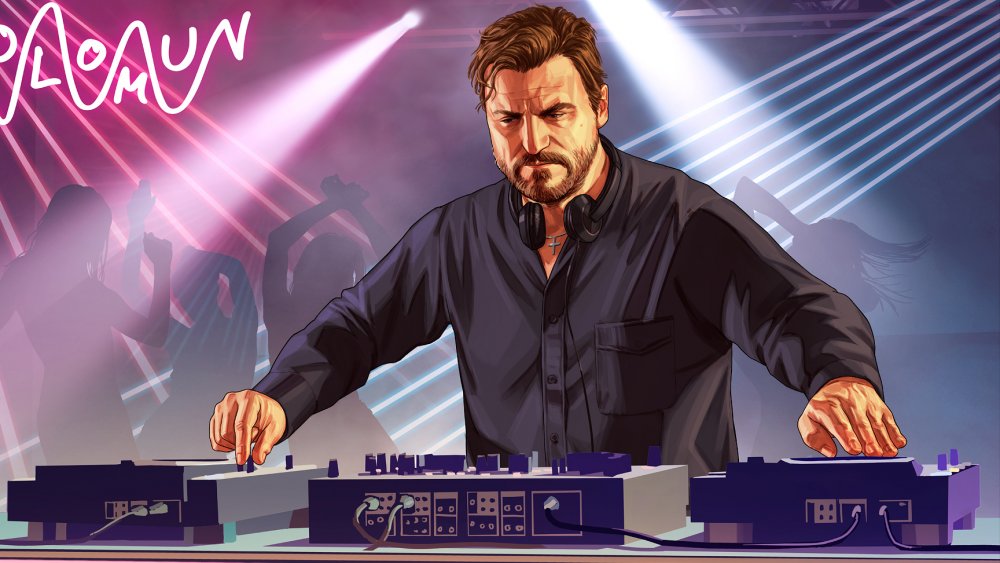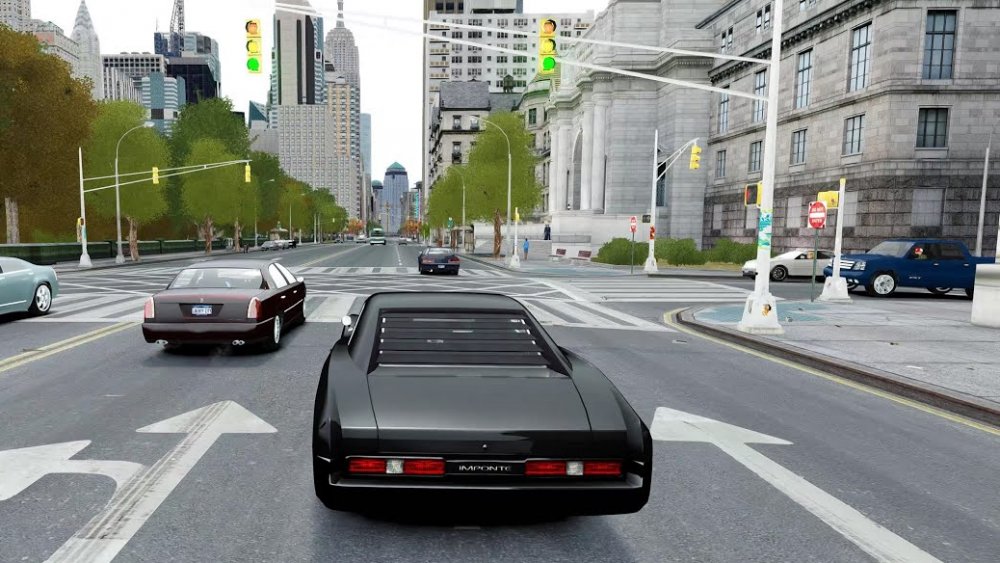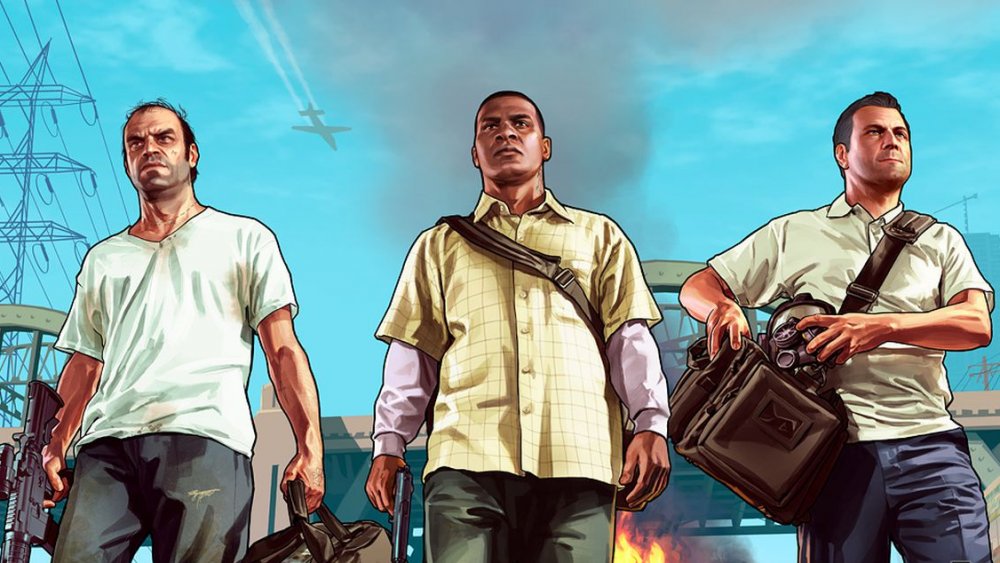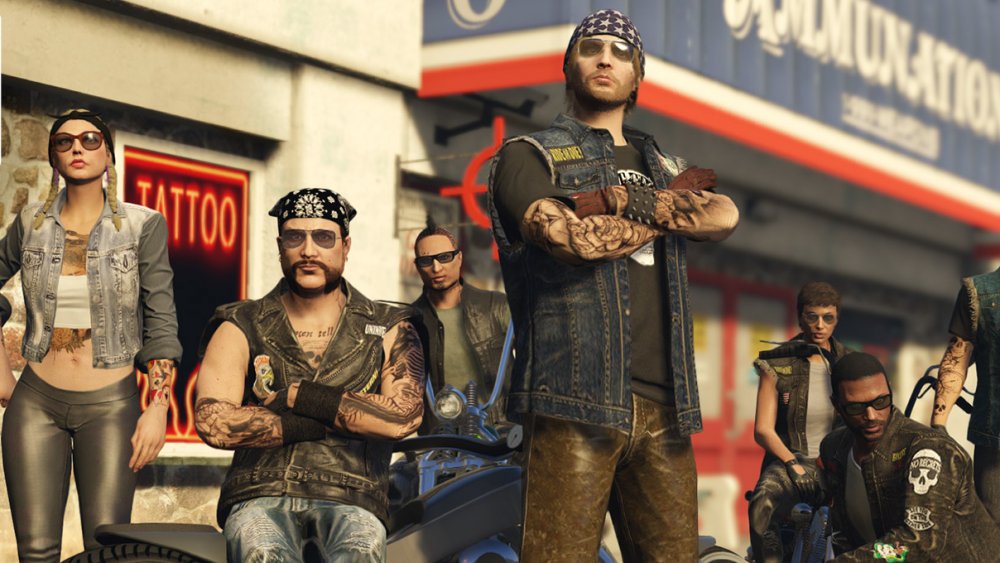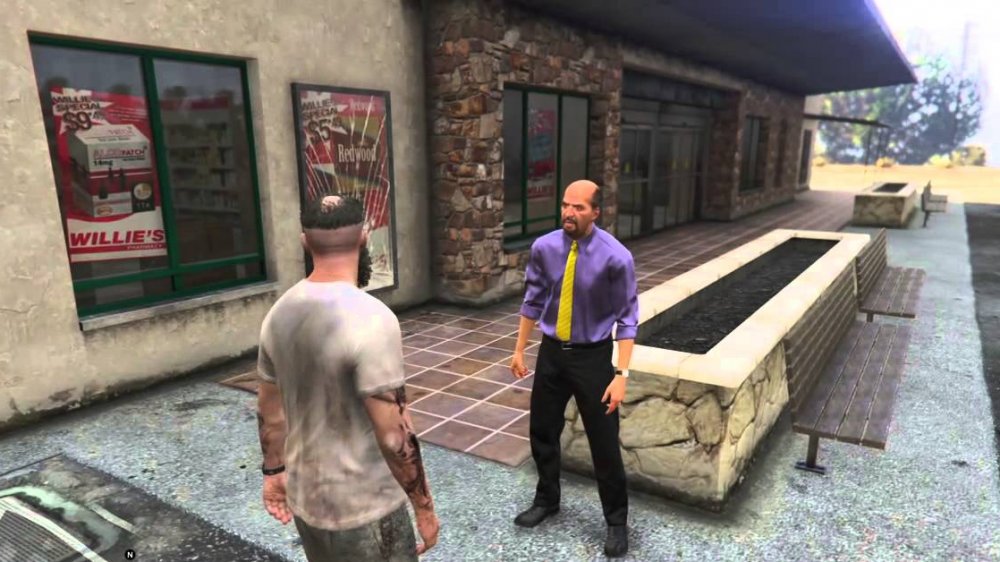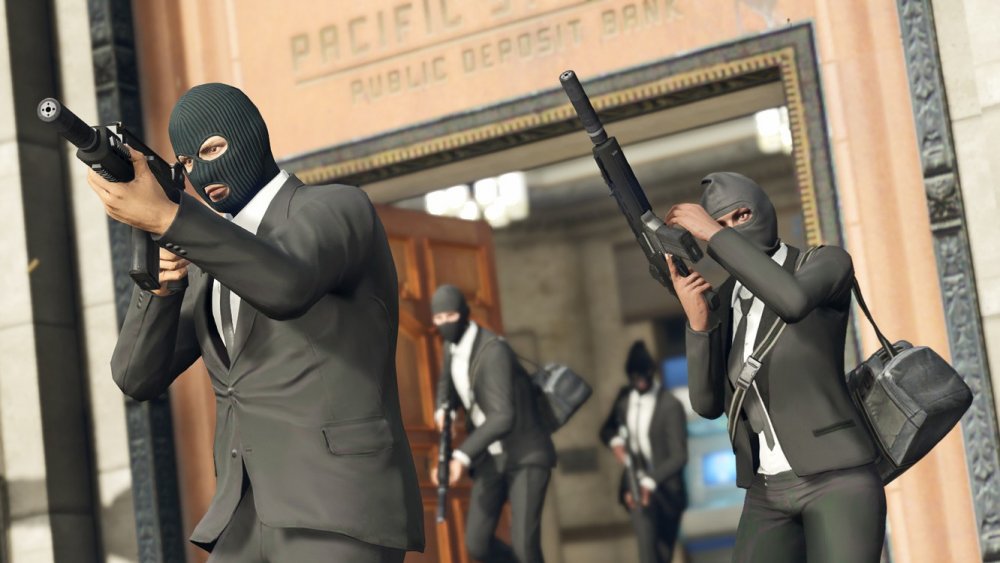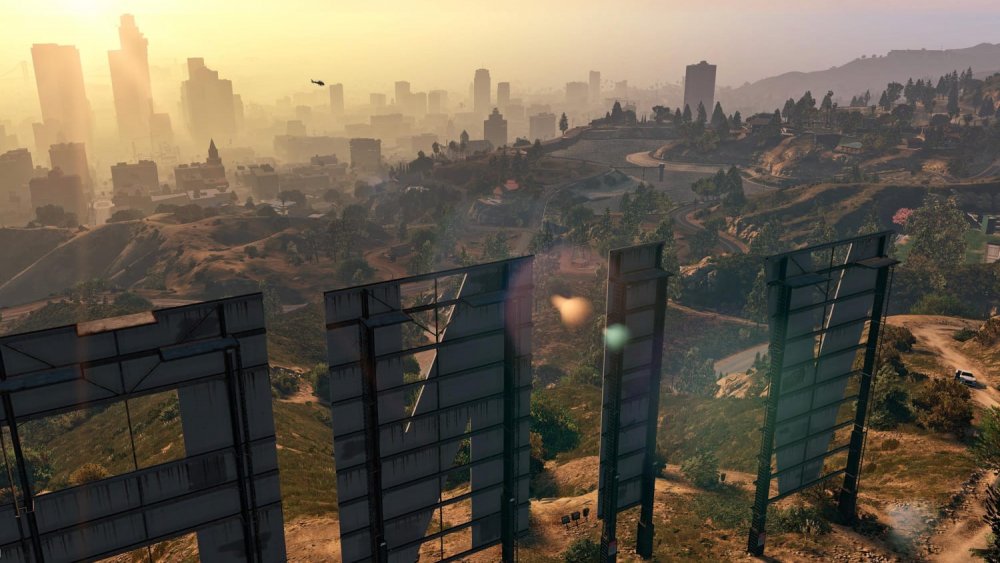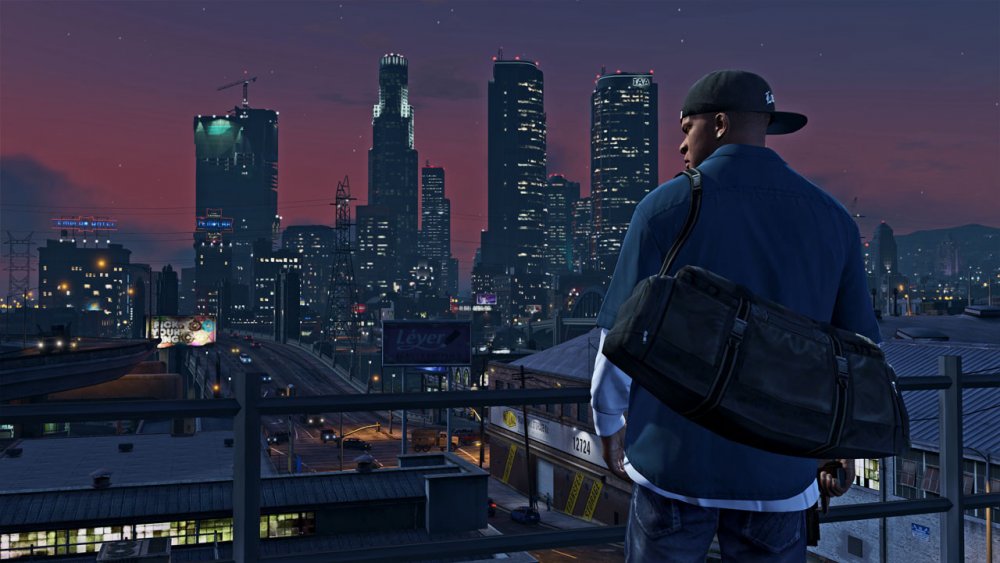Rules Every Grand Theft Auto Game Has To Follow
Since the release of Grand Theft Auto 3 in 2001, the Grand Theft Auto franchise has been a dominant force in the gaming world. The series has courted controversy, introduced era-defining gameplay concepts, and innovated narrative structures in a way never before seen in console and PC games.
The success of Grand Theft Auto is no accident, however. Even before the series became a worldwide phenomenon, the steady vision of producers such as Sam and Dan Houser and designer Leslie Benzies helped craft a signature Grand Theft Auto experience.
Adherence to some straightforward principles of game design, storytelling and world building have ensured each Grand Theft Auto title has improved upon its predecessor. Attention to detail and location — along with technological innovation — have made them some of the most memorable titles of the last 20 years.
Every new entry in the franchise must hit Rockstar's high standard for quality. On top of that, it must try to meet the lofty expectations of gamers. Here are the rules every Grand Theft Auto game has to follow to reach those very high bars.
Design starts with the location
Developing a Grand Theft Auto game takes years, with no overlap between production of flagship titles. According to former Rockstar North president Leslie Benzies, the process always starts with choosing a location. "Where is it going to be set is the first question," Benzies told MCV."Then that defines the missions; you're doing different things in LA than in New York or Miami."
The choice of location determines the atmosphere of the game, the story the developers can tell and the overall layout of the map the player will see. As Benzies explained, this was the first piece of the puzzle Rockstar put together in 2008 for Grand Theft Auto 5, five years before its release.
While Rockstar is an international organization and all its founders were born in the United Kingdom, the game has become linked to American culture. As such, the locations the team considers are almost exclusively based in the United States. "[M]y own personal feeling is that GTA is America. With this game, I think, we're very happy with the location. It let us do something iconic," Rockstar co-founder Dan Houser told The Guardian in 2013.
Let players be the bad guy
The story of the Grand Theft Auto franchise starts — according to The Sydney Morning Herald — at a game studio called DMA Design in 1994. DMA Designs was developing a game called Race'n'Chase, a top down, open-world police simulator where players ran down criminals while dodging traffic and pedestrians. However, when DMA Design brought in beta testers to give Race'n'Chase a playthrough, they found the game limited by the focus on obeying traffic laws. Testers seemed more interested in breaking those rules and playing with complete freedom, even if that came at the expense of the virtual pedestrians.
By the time Race'n'Chase reached BMG Interactive, where future Rockstar co-founder Sam Houser worked, the designers had modified the game to allow players to break laws as they saw fit. The game also encouraged lawless behavior and acts such as carjackings with a point system, which yielded much more positive reactions from testers. The developers learned a lesson from this change that would guide all future Grand Theft Auto designs.
As Rockstar biographer David Kushner told VentureBeat, "Just let 'em be the bad guy."
Use lesser known voice actors to immerse players
Grand Theft Auto 3 established the immersive, open-world gameplay that catapulted the franchise to fame. Its follow up, Grand Theft Auto: Vice City, went a step further to prove the game could have as much style as it did substance. Vice City takes place in a fictional version of 1980s Miami, complete with cars, clothes and licensed music to set the scene.
While Vice City was a step forward for the series in many ways, one of the most significant steps was the introduction of a player character who spoke, as opposed to the silent Claude of Grand Theft Auto 3. Ray Liotta voiced the protagonist, and the rest of the cast included other high profile actors such as Burt Reynolds, Luis Guzmán and Gary Busey.
While having a main character that interacts verbally with other characters was a major advancement in storytelling for the Grand Theft Auto series, subsequent titles have avoided using well-known voice actors. Leslie Benzies described the issue in an interview with Digital Trends, stating, "[I]f you choose a celebrity with a distinctive voice, it can damage the player's immersion. They're not thinking 'Okay, this is CJ,' or 'this is Niko,' they're thinking, 'that's Morgan Freeman.'"
Make the music as authentic as possible
One of the tools that Rockstar has used to pull players into its worlds since the first Grand Theft Auto title is music. Grand Theft Auto games have used radio stations with programmed playlists meant to emulate the songs, DJ banter and commercials that the player would expect to hear when driving their own vehicle in real life.
The goal, as former lead audio engineer Craig Conner told GamesTM (via Archive.org), has always been authenticity. The first two Grand Theft Auto titles had no licensed music, instead using music written and recorded entirely in house that was intended to emulate the popular genres of the '90s.
Grand Theft Auto 3 was the first game that used real music on its radio stations, and Grand Theft Auto: Vice City is fondly remembered by many gamers as their introduction to classic tracks from the '80s. Later titles, such as Grand Theft Auto 5, used a composed score that changed based on the situation the players encountered, in combination with licensed music to create complete immersion for players.
Everything has to be real in an open-world game
One of the challenges of developing a game designed to be completely open to the player is the fact that the map designers lose the opportunity to build fake backdrops and set dressing. Rockstar North art director Aaron Garbut described the challenge in an interview with Buzzfeed, stating, "You can't fake anything as soon as you have flying in a game and you can go anywhere; anything you see has to be real."
Rockstar's devotion to realism presented multiple challenges. The first was technological. Up until Grand Theft Auto 4, Garbut admitted, the series was behind the curve graphically because the technology to support large environments and high fidelity visuals wasn't there. While Rockstar was eventually able to build the tools to match the graphics of its competition, the second challenge never went away — production. Building a fully realized, fully interactive world with high levels of detail is a lot of work. However, the studio's dedication to this level of quality helps the games provide the iconic experiences they are known for today.
A central narrative drives storytelling in Grand Theft Auto
While a key appeal of the Grand Theft Auto series has always been the freedom given to the player, Rockstar has always striven to tell stories that see characters grow. One of the challenges the developers faced was finding a way to tell stories while giving players the liberty to make the choices that they wanted to.
This was made even more difficult by the inclusion of three playable main characters in Grand Theft Auto 5. Former Rockstar North president Leslie Benzies described this process to IGN, stating, "We have tried to make the central narrative and each character's individual story arc an epic and cinematic journey, and this wouldn't be possible without a degree of linearity."
To solve this in Grand Theft Auto 5, the designers allowed the players some freedom in choices that characters make over the course of the game. The true freedom, however, comes from tactical decisions. The character arcs continue to progress as the story requires, but the decisions made in game — where the player spends most of their time — are left as open as possible.
Even online, players must have a unique experience
The commitment to player choice within a narrative structure has contributed to one of the most important factors of the Grand Theft Auto experience: uniqueness. Having multiple characters helped Grand Theft Auto 5 accomplish this goal, but this design principle has carried over to the current focus of the Grand Theft Auto world, Grand Theft Auto Online.
Grand Theft Auto Online first launched in 2013 and has grown into a vibrant community. To keep the heists, missions and activities engaging, the developers needed to find a way to ensure that every person on a server felt like they were a central part of the action, no matter how many players were involved. Rockstar director of design Imran Sarwar spoke with Game Informer about the challenges of making sure players were never left "feeling like [they're] a backup gunner along for the ride."
In every Grand Theft Auto game, whether online or single player, every player interaction is intended to feel unique and significant.
Dialogue must blend with the entire experience
Another difficulty that comes with creating an open-world, urban environment is populating it with believable characters. Doing this meant not only coming up with dialogue that fit a wide array of colorful characters, but — as former Rockstar dialogue director Will Morton told Eurogamer — ensuring that dialogue didn't become "boring or repetitive, so every experience can be different for every player."
Even early Grand Theft Auto games had dozens of NPCs. Later titles had hundreds. This meant massive increases in the amount of dialogue featured in the game. Grand Theft Auto 4 had 80,000 lines of dialogue, while Grand Theft Auto 5 had just under 160,000, according to Morton.
Making all this dialogue work meant working closely with Dan Houser, who supervised the script for the overall projects, as well as working with hundreds of voice actors. In some cases, it even meant handing the script over to former gang members and police officers who had become actors and letting them modify it for more authentic sounding lines.
Weapons need to be balanced while keeping progression as open as possible
While a core principle of the Grand Theft Auto series has been player freedom, the developers have always been challenged to make sure the games balance progress with the tools available. Earlier entries kept desirable items such as cars and customization locked until later in the game by restricting access to certain parts of the map.
For example, in Grand Theft Auto 3, Vice City and San Andreas, bridge closures keep players from more affluent neighborhoods, expensive cars and better weapons. Grand Theft Auto 4 kept the world open from the start, but would give the player a six-star wanted level for crossing certain boundaries. However, both Grand Theft Auto 5 and Grand Theft Auto Online made the entire world accessible from the start — with one exception.
"Letting players have any weapon they want, whenever they want it, would make earlier missions less of a challenge and less satisfying," Leslie Benzies said in an IGN interview. Rockstar has consistently emphasized the need to balance freedom and challenge, and weapon balance has been key to this.
Switching territory means switching atmosphere
While the expansive, open worlds of the Grand Theft Auto series have innovated in terms of size and detail, they are small in comparison to the real world locations they are modeled after. Changes occur in the game over a few blocks that, in real life, would take place "across a stretch of ten miles," art director Aaron Garbut explained to MCV.
To accommodate this, designers work hard to design maps and environments that have distinct atmospheres. Level designers spend "up to four years in this virtual place," according to Garbut, driving around them more than they do in their real neighborhoods. This process lets them specify what is unique about each location and ensure that every environment feels distinct to the player.
The long process of putting the map together means missions are designed for the space already created. But Rockstar will, as Garbut puts it, "move things around if the story or missions demand change."
Don't make the game violent, set it in a violent place
Since its inception, the Grand Theft Auto franchise has allowed players to indulge some of their most antisocial tendencies. As a result, the series has been no stranger to controversy. However, despite the core philosophy of letting players "be the bad guy," the goal of Rockstar has never been to create a game that is appallingly violent.
Instead, as Leslie Benzies told Digital Trends, Rockstar tries to base its games "in places where violence is or was a part of everyday life," such as "the Old West or the criminal underworld or cocaine-flooded Miami." This allows the developers to explore the themes and settings that they and players are most interested in.
Rockstar's decision — placing players and characters in more violent settings — has aided the series in appealing to a more mature audience. It also helped people see, according to Benzies, "that games are no longer all about eating dots or blowing up spaceships, that they can be dark and edgy and challenging."

